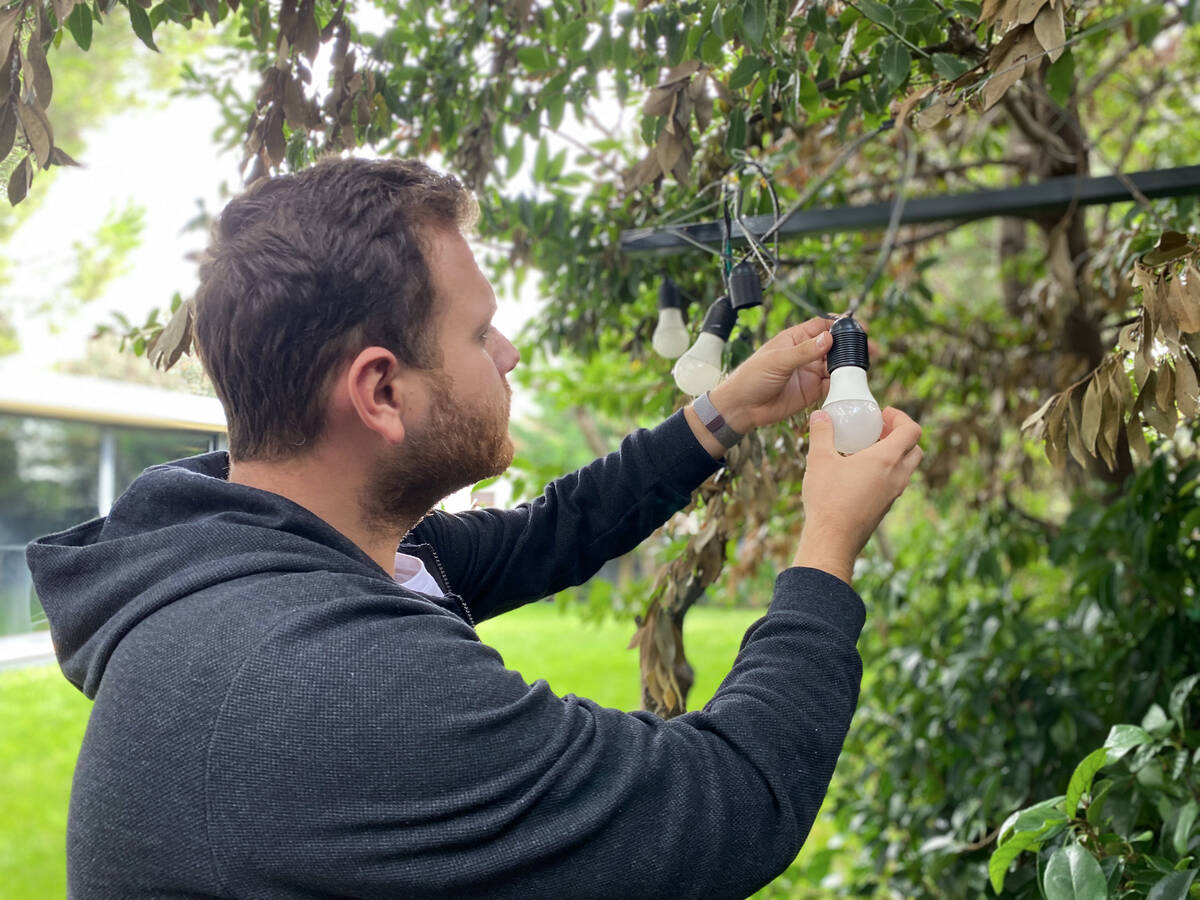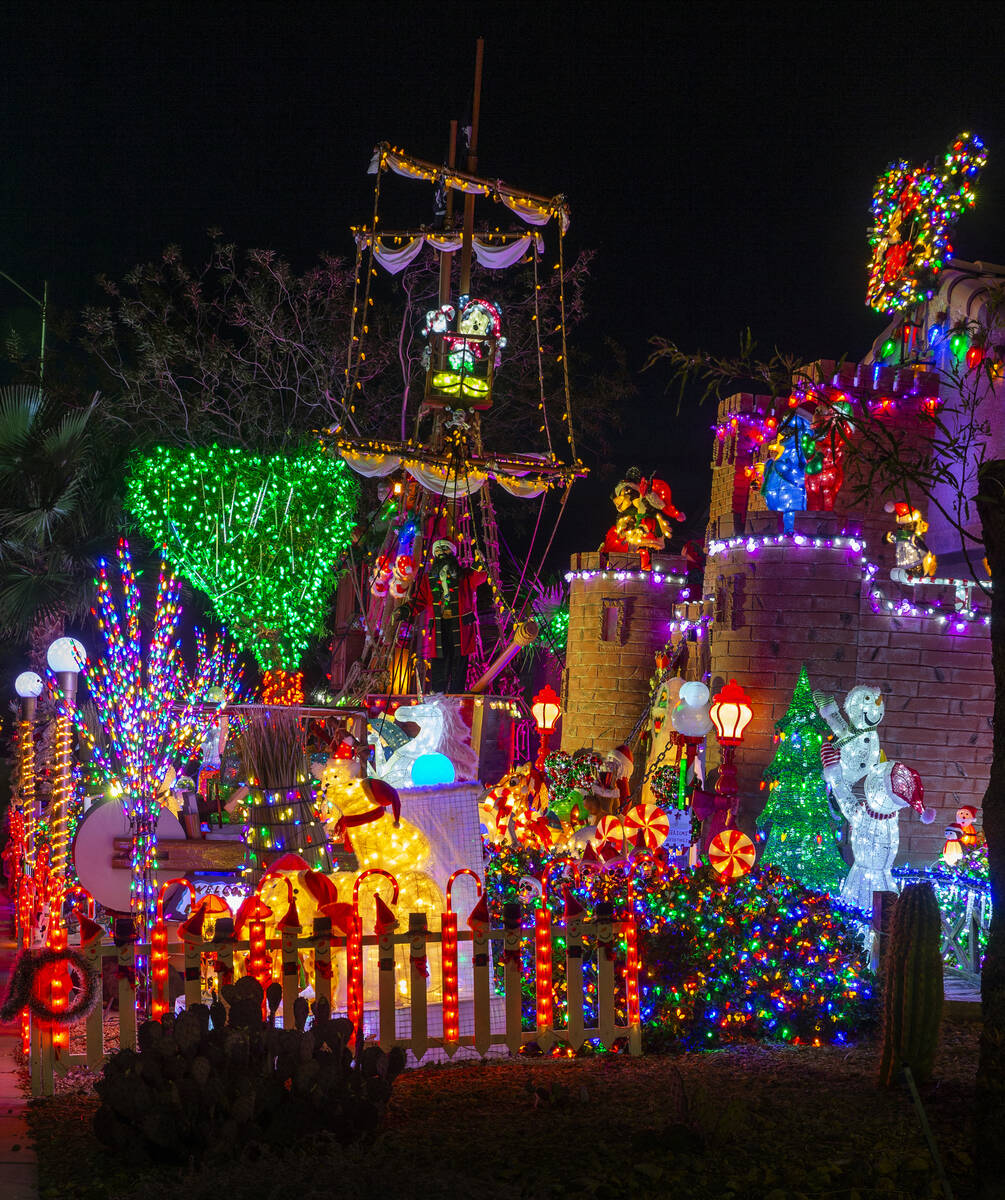Safety tips for outdoor holiday decorating
Looking for some help with your outdoor holiday lighting display? Let’s go to the Southern Nevada experts, Dale Ryan and Dyanah Musgrave.
The Boulder City husband-and-wife team has been lighting up for nearly 20 years, often winning national acclaim for a glowing December-to-January tribute.
In 2016, they won ABC’s “Great Christmas Light Fight” and a $50,000 prize. Each holiday season, about 20,000 visitors walk through the display at their single-story home on Fifth Street.
There’s even a rumor they’ve been contacted frequently by that jolly red-suited guy to do some exterior decorating at the North Pole because the elves are just too busy this time of year to be stringing lights.
“It’s really all about being cautious, about being safe,” says Musgrave, a former general contractor. “So many accidents happen with people on ladders, and that’s common this time of year.”
According to U.S. Consumer Product Safety Commission, from 2015 to 2017, there were about 100 Christmas tree fires and about 1,100 candle fires during November and December, resulting in 20 deaths, 160 injuries and nearly $50 million in property damage each year.
So safety, including electrical awareness, is paramount.
Here are the Boulder City couple’s tips for safe and colorful holiday outdoor decorating.
Ladders
Use the right ladder. Extension ladders are for outdoor use. Don’t overreach. Make sure it’s situated on a steady surface; don’t get on a wobbly ladder.
And get someone to keep that ladder steady while you’re climbing in some type of nonslip shoe.
There’s also a one-to-four rule for ladder safety. For every 4 feet the ladder rises, it should be 1 foot from the wall.
Ryan, 70, says he has no problem climbing ladders to hook up displays and lights, even at the rooftop.
“I’m in pretty good shape,” he says. “I feel like a kid.” At this point, his wife is rolling her eyes, making a face.
“But if anyone is unsure, don’t climb.”
There are plenty of figures and products so that homeowners can do all their lighting on the ground and get brilliant results, Ryan says.
Electrical
The most important aspect of outdoor lighting is using products rated for exterior use. Check the labels or cords for UL (Underwriters Laboratories) ratings.
Musgrave says to check extension cords and wires for fraying. If they can’t be repaired, toss them. Don’t risk electrical fire or shock.
“We don’t have a lot of rain here, but for extension cords, there are covers designed to keep water out of the connections, where two or more cords meet,” she says. “Those are great.”
Also, use specially made clips to attach strings to gutters, shutters and siding. “Avoid stapling wires,” she says. “That’s often a way to damage the wire coating.”
Ryan uses about 10,000 zip ties on wires each season, and he also suggests using small strips of Gorilla tape for securing strings on the face of those thicker concrete-style roof tiles.
Don’t overload
Ryan uses about 60 percent LED lights to 40 percent incandescent lights for his annual display. He likes the way both lights blend for a warm, inviting feel.
But the newer LED lights burn cooler, more efficiently. They use much less electricity, so you can attach seemingly endless strings together for use on one outlet.
Now, for that outlet. To make sure you don’t overload, check the circuit breaker for amperage (it’ll be 15 amps or 20 amps). Wattage of the product or light string most often is listed near the UL label.
Once you determine amperage and watts, here’s a simple formula for plugging in:
15-amp 120-volt circuit: 15 amps x 120 volts = 1,800 watts
20-amp 120-volt circuit: 20 amps x 120-volts = 2,400 watts
It’s usually a good bet to make sure your maximum load is about 80 percent (so 1,440 watts for a 15 amp circuit, 1,920 for a 20 amp circuit).
Just remember, there could be more than one outlet on that circuit breaker, too.
Ryan tests and inspects all of his lights and displays before he starts to hang them. Anything that is too worn is recycled or tossed.
Be organized
Musgrave says having a lighting plan is a huge step toward being organized. Maybe sketch your display on paper before heading outdoors.
Figures can be staked with tent spikes or pieces or pieces of rebar pounded into the ground.
One way to stay organized is to label light strings when you take them down. For example, label that string that fits perfectly on the gutters over the garage when you store them so you can put them up in the same spot next season.
Ryan and Musgrave take about 10 weeks to get their display ready for visitors, including up to about 10 days once everything is in place for testing.
“Just stress safety,” Musgrave says. “That’s the biggest thing.”
Ryan agrees, and he says any display of holiday joy should be embraced.
“I don’t care what people put up, even if it’s one string of lights,” he says. “As long as it brings that Christmas spirit.”



















